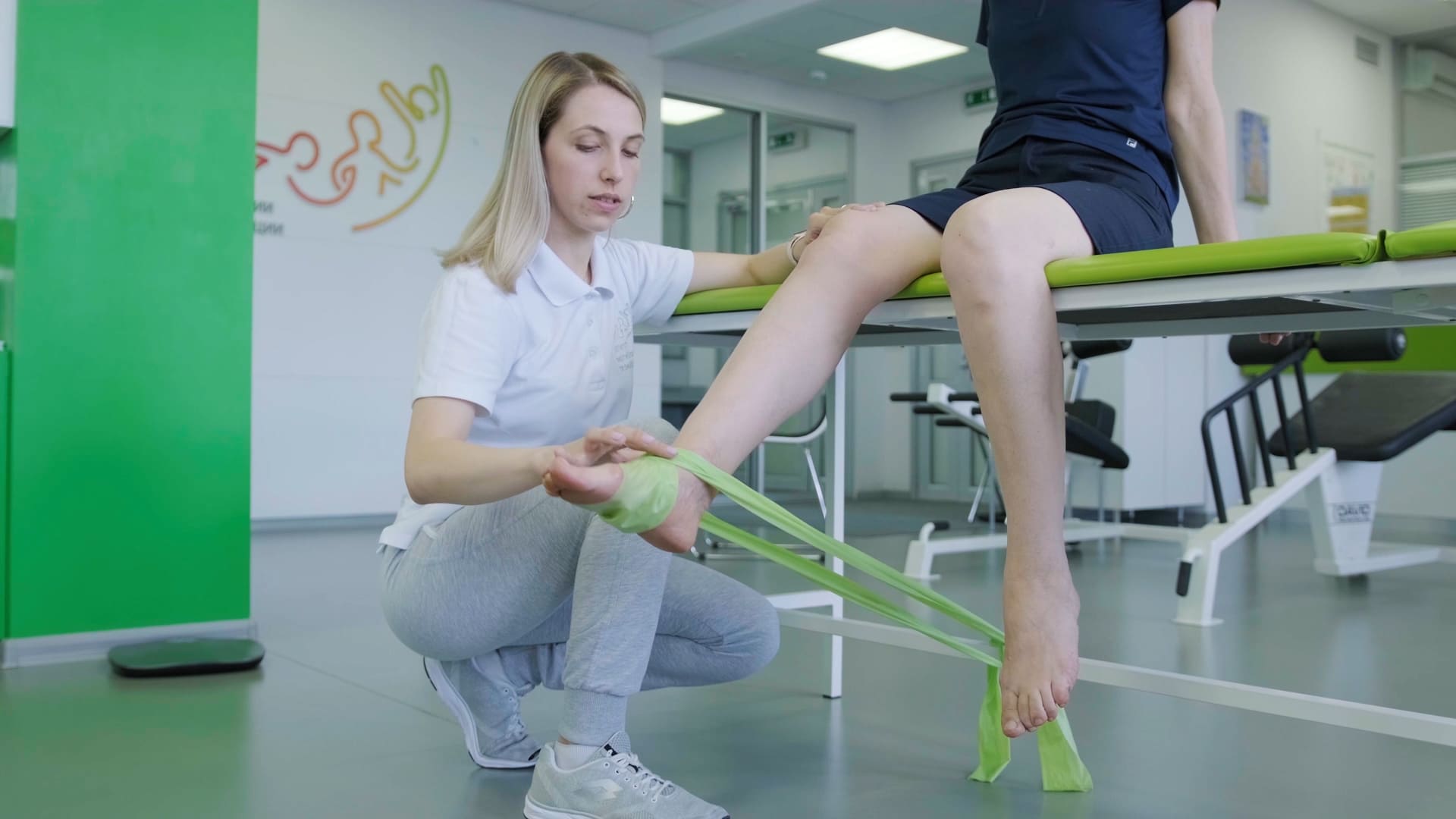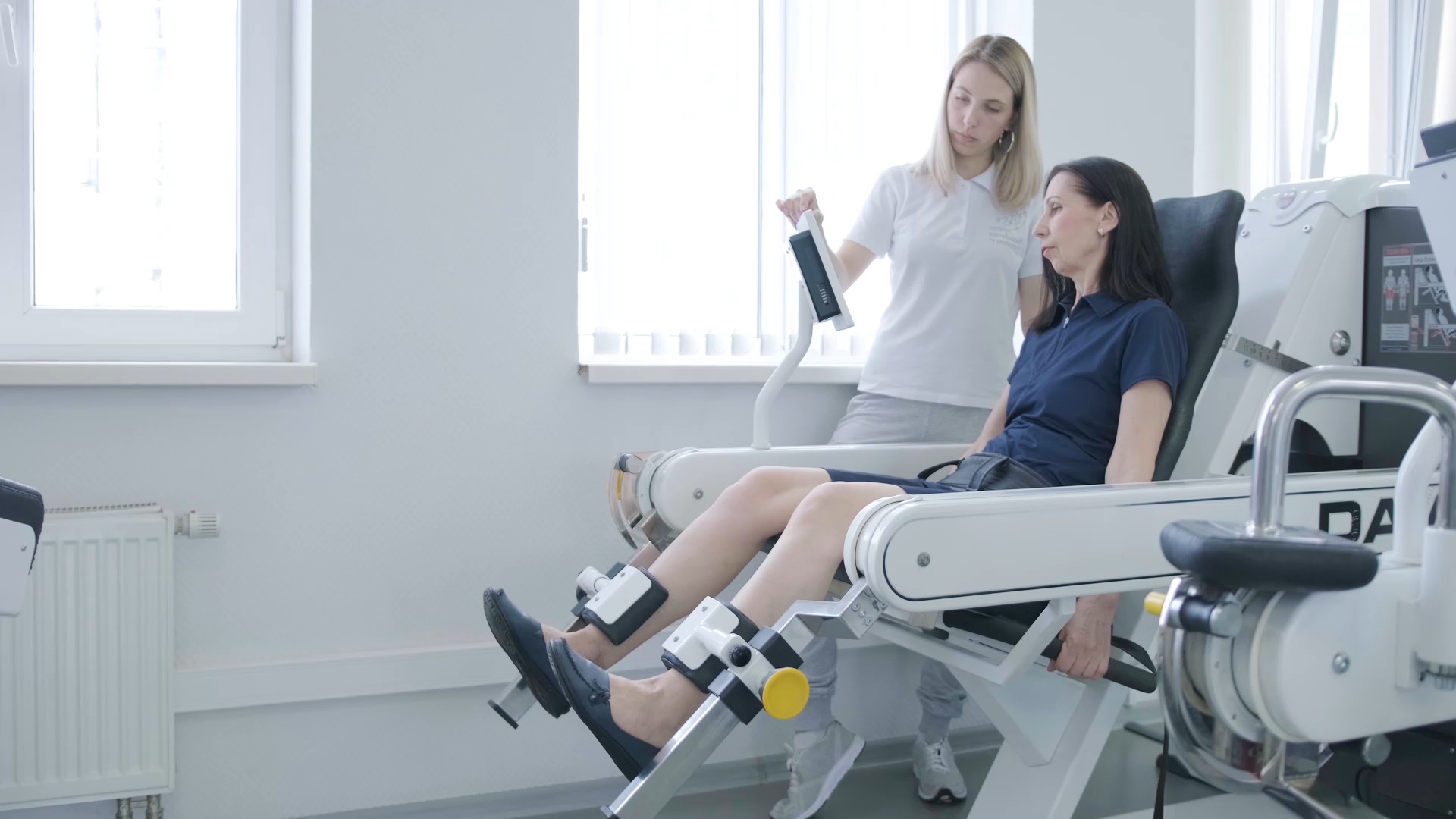Typically, replacement arthroplasty is performed in cases of severe stages of osteoarthrosis in presence of substantial joint deformation, as well as in cases of post-traumatic joint defects, when all kinds of conservative treatment are no longer effective.
We recommend both preoperative procedures before arthroplasty and postoperative rehabilitation. When patients undergo preoperative procedures they are able to restore mobility and stabilization functions, improve blood circulation and metabolism, strengthen the muscles, as well as return to full active lifestyles much faster after their surgeries.

The point of the preoperative procedures is to restore the muscles and the tendons as much as possible, to strengthen them, to restore normal blood circulation, which will play a crucial role in the healing of the tissues surrounding the artificial joint.
Rehabilitation of the hip or knee joint after injuries or joint replacement requires a comprehensive approach. Immediately after the surgery, 1-3 months are needed for recovery. After hip replacement, patients may do gymnastics, remedial gymnastics, physiotherapy and, in rare cases, therapeutic massage.

When the pain is gone, the most important task is to tone the muscles in the periarticular area. The Center for Spine Strengthening and Joint Rehabilitation provides a unique opportunity to strengthen the muscles stabilizing the knee joint in a perfectly safe manner even in cases of severe injuries of ligaments and menisci with the help of the David Knee Concept technology.
This is achieved through remedial gymnastics on computerized medical training stimulators, using moderate loads controlled by the software and the rehabilitation professional.
After surgeries on the knee and hip joints, it is important to develop the quadriceps and the posterior hip muscles, gluteal muscles, and ankle joints. Patients should practice careful and controlled flexion and extension of the operated joints.

Recovery and rehabilitation options after hip and knee joint replacement at the Center for Spine Strengthening and Joint Rehabilitation
The program for recovery and rehabilitation of the lower extremities, knee and hip joints after injuries or replacement surgeriesincludes the following exercise routines controlled by software and rehabilitation professional for workout of the joints with the help of the David Hip & Knee Concept stimulators:
- Extension and flexion of legs at the knee joints for their recovery from injuries,
- Extension of the hip joints,
- Abduction and adduction of the hips.

